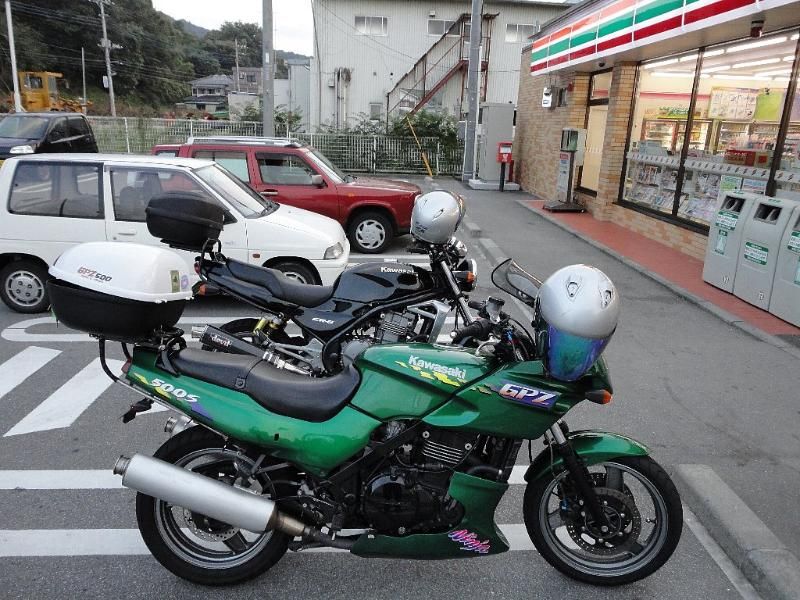The Kawasaki Z650RS has been attracting a lot of attention since it was announced, and while it's a middle-class machine with a parallel-twin 649cc engine compared to the Z900RS, its slightly smaller and lighter bodywork and torquey twin engine make it a model with a different flavor. It is expected to be different from Z900RS.
The most popular current Kawasaki twin is the W800, but it is a neo-classic that is not sport oriented. So, is the Z650RS' engine designed for the same kind of ride? If you look at Kawasaki's other twin models, you'll see that this is not the case at all. From the Ninja 400 and Ninja 650 to the GPZ400S, Kawasaki has always had a passion for mid-size sport twins.
GPZ400S, EX-4...... middle twin's hidden masterpiece
According to the published specs, the Z650RS is powered by a 649cc, DOHC 4-valve, 2-cylinder engine. With a seat height of 820mm, the Z650RS is almost identical to the Z900RS, but at 187kg, it's almost 30kg lighter than the 215kg Z900RS. The compactness of this engine and bodywork perfectly matches the image of the famous middle twin motorcycles of the past. The first twin that can be said to have its roots was the GPZ400S released in 1986.

The Z650RS, just announced for the European market, looks like a Z900RS, but the engine is a high-powered twin that follows Kawasaki's mid-range sports philosophy.
The GPZ400S was a downscaled model of the GPZ900R that appeared two years before its launch. However, the engine was a liquid-cooled parallel twin with 50PS/10,500rpm, which was said to be "a cut above the GPZ900R engine". For this reason, it was also called the "Half Ninja". Although it tended to be overshadowed by the four-cylinder GPZ400R, which was released around the same time, it could be said that Kawasaki was so confident in its mid-twin models that it could put them in the same class of mid-sports models.

The GPZ400S was released in 1986. The GPZ400S had the characteristics of a twin motorcycle, light weight and high power, but with a long wheelbase, it was more like a sports tourer. At the same time, it is equipped with 16 inch wheels, and you can feel the enthusiasm to combine the performance as a cornering machine.

In 1994, the EX-4 was launched, inheriting the character of the GPZ400S, the cowl design was changed to streamline while keeping the high power engine. The rear brake was strengthened to be a disc, and the wheel size became 17 inches front and rear for better handling.

With its low fuel consumption and large 18 liter tank, the GPZ500S was a popular touring machine, and the 500cc European model has long been a favorite in Europe. In the back, you can see the naked model ER-5, which can be considered a sibling machine. It's not a Barrios!
In the shadow of a famous motorcycle, there is a rare motorcycle. Is the concept of EN400/Vulcan 400 suitable for the modern age?
The middle twins have always been popular for their ease of use and practicality. But now we're going to introduce you to a different kind of motorcycle: the EN400/Vulcan 400. It debuted a year earlier than the GPZ400S and is the true ancestor of the Z650RS.
Although the silhouette of the motorcycle, with its upswept handlebars and stepped seat with backrest, is a classic chopper design like the Captain America from the movie Easy Rider, it is powered by a parallel-twin DOHC engine with 45PS at 8500rpm. The suspension is a rigid cast wheel, and the style is very unique, as if a sports engine was put directly on a chopper. This engine was reinforced to 50PS and installed in the later GPZ400S.

The Vulcan 400 is a chopper that can take on a sports tourer wrapped in a full cowl, with a thick seat and easy up handlebars for touring performance, but a high-powered engine that you want to rev! This is the one and only model to meet the seemingly contradictory expectations.
However, in the late 1980s, full-fledged cruiser models with V-twin engines, low seats, and a focus on heartbeat rather than power appeared one after another, and the so-called "Jamerican" with its sport engine and cruiser style disappeared. The EN400/Vulcan 400, which appeared in the midst of these adverse times, continued to be produced with different specifications until 1994, when it was replaced by the liquid-cooled V-twin engine Vulcan and production ended. However, the concept of a cruiser with a sports model engine is still attractive today.
Lastly, we'll take a look at the Z750 Twin, the most unusual of the Kawasaki twins, a successor to the W1 series introduced in 1976, but with a newly designed DOHC head engine and styling similar to the Z1 and Z2, it's the origin of the Z650RS. The Z650RS promotional movie includes two shots with the air-cooled Z650, and it is said to be the second coming of the zapper (=Z650), but it is also essentially the second coming of the Z750 twin.

The Z750 Twin, released in 1976, was the first of Kawasaki's sport-twin challenges. The Z750 Twin was the first of Kawasaki's attempts at a sports twin.




